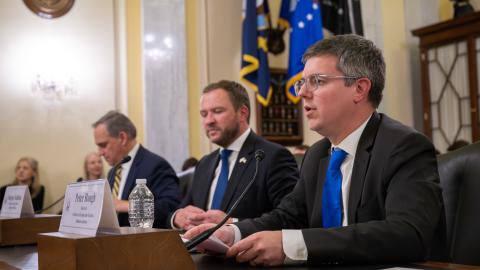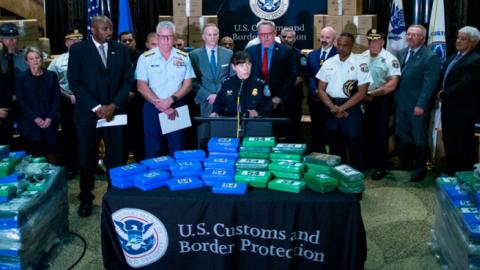The recent historic seizure of more than $1 billion worth of cocaine at the Philadelphia seaport marks a significant blow against the illicit drug trade by the United States. Preventing these drugs from hitting the streets not only saved lives, but the criminal cartels have suffered a massive financial loss. The bust of shipping containers filled with cocaine depended upon solid actionable intelligence coordinated by several agencies. Shipments as large as the more than 19 tons of cocaine in this seizure are often the pooled investment of several trafficking groups. The seizure cost the cartels an enormous investment in risk, costs, violence, and corruption.
In the past, drug traffickers were reluctant to use containers because they would frequently lose control of the product for an extended period and would have difficulty assigning blame for a loss. That a product load this consequential was seized at its most valuable point, which is arrival in the United States, suggests that pressure on the southwest border, across which much cocaine travels, may be affecting the calculus of the cartels.
But this seizure is also a warning for our federal authorities. Not only are we suffering a devastating opioid epidemic, accounting for 47,600 deaths out of more than 70,200 total drug deaths in 2017, and a steeply growing methamphetamine crisis, accounting for more than 10,300 deaths, but the cocaine supply from Colombia has now surged to record levels. The highest estimate of cocaine production in Colombia was over 1,015 tons for 2017, and figures show another comparable year in 2018. While 19 tons is off the market, it is critical to ask what will come of the other 996 tons of pure cocaine still pointed at the United States and the global markets.
Moreover, we have now seen three years of record cocaine production. Typically, it takes an estimated two years before a crop is harvested, processed, loaded, and delivered to our streets. The cocaine seized in Philadelphia represents the product of an older and smaller crop, with more on the way. Cocaine overdose deaths, once sharply down, are now surging, with growing numbers of users producing massive revenues. We also had the 30 year anniversary of the death of basketball great Len Bias from a cocaine overdose, which shocked the country and spurred intervention against a drug trade driving gang killings and urban chaos.
Could we be facing a similar addiction and violence crisis? It is easy to forget that we once knew what to do to control this menace. Under Plan Colombia, supported by successive administrations, bipartisan majorities in Congress, and Colombian partners, Colombian cocaine production was slashed, falling from 770 tons in 2001 to 231 tons by 2012. Nationwide use, overdose deaths, and violence fueled by cocaine dropped dramatically.
The success of past policy was undone under President Obama, as the country forsook its international drug control leadership and lost focus on the surging drug supply. The partnership with Colombian President Alvaro Uribe faltered when his successor, Juan Manuel Santos, pursued a “peace deal” with the cartels. Importantly, a critical tool of coca control, aerial spraying with the chemical glyphosate, known as the herbicide Roundup, was also abandoned, further adding to the surge in cocaine production.
Moreover, the threatened collapse of Colombian neighbor Venezuela reveals a government with a history of complicity in cocaine trafficking that is now desperate for revenue. Whether as a transit point for cocaine from Colombia, or as a potential center for cocaine production, the risks from Venezuela as a failed state are enormous. As if the damage from commercialized high potency marijuana use, coupled with the deadly impact of pharmaceutical opioids, fentanyl, methamphetamine, and rampant cocaine were not enough, we have also learned that Mexican heroin production likewise reached, for the second successive year, record levels in 2018, according to American intelligence estimates.
The United States is in the midst of a drug crisis of historic proportions, as multiple drugs of abuse soar in availability and prevalence. These record overdose deaths are just the most visible signal of what is a converging public health crisis of drug abuse on a scale we have never experienced. For almost a decade now, the government response has been profoundly inadequate and at times simply misguided. The danger can only be met by reestablishing proven measures on a scale that matches this threat.















